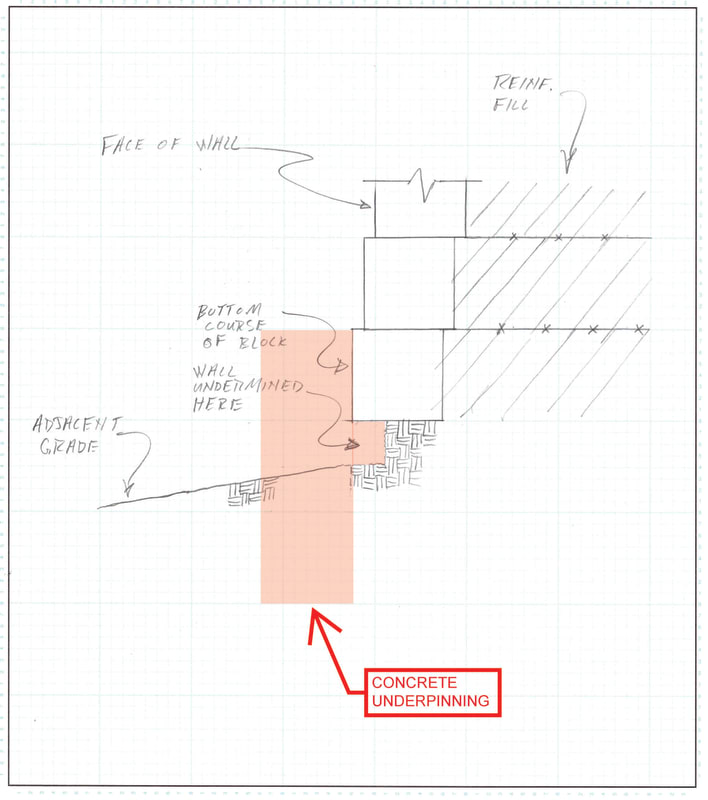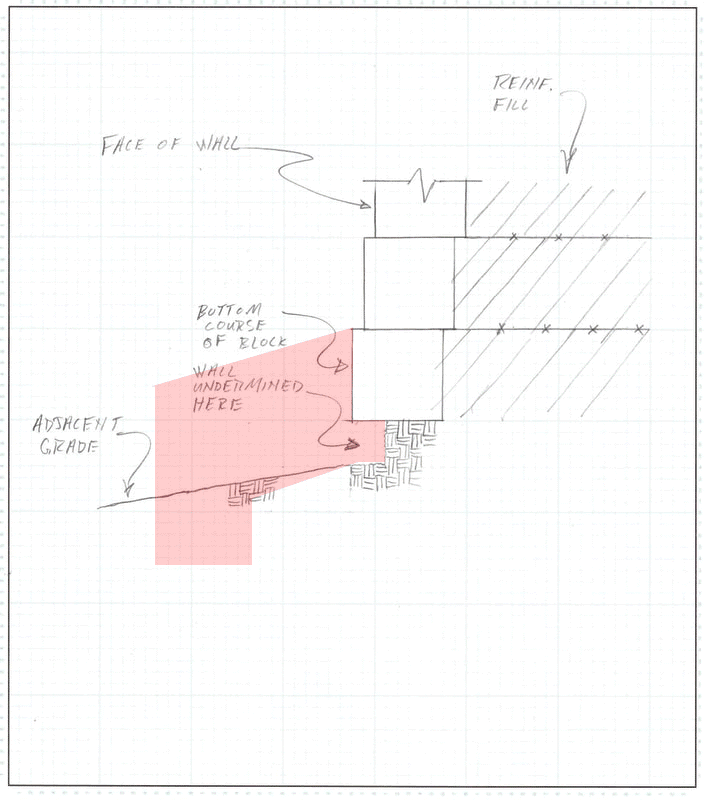I am assessing a situation involving an existing segmental retaining wall (SRW) that is undermined at the base course due to inadequate embedment of the base course(s) below grade. The wall is approximately 150 feet long
and approximately 16 feet high (maximum). The adjacent grade at the toe of the wall slopes up gradually from one end of the wall to the other, so the base course of blocks steps up periodically as the grade slopes up. Due to inadequate embedment at the base of the wall and the stepped base course, there are two locations along the wall where the base course of blocks is above the adjacent grade (i.e., zero or negative embedment). At each of these locations the face blocks have been partially undermined due to loss of aggregate base from underneath the base course of blocks where there is negative embedment (see photos and sketch). The wall has been in service for approximately 20 years and appears to be in serviceable condition other than these two locations where the face blocks are undermined. Each of these locations is approximately 6 feet long.
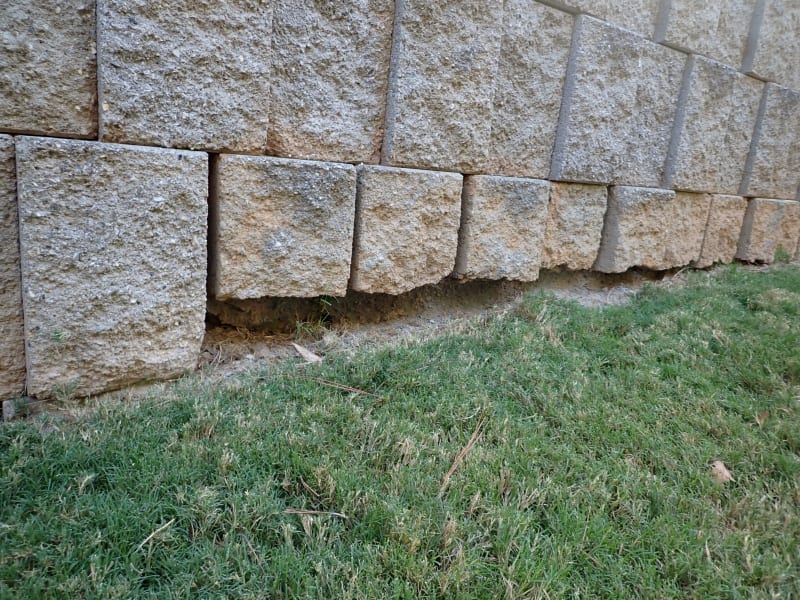
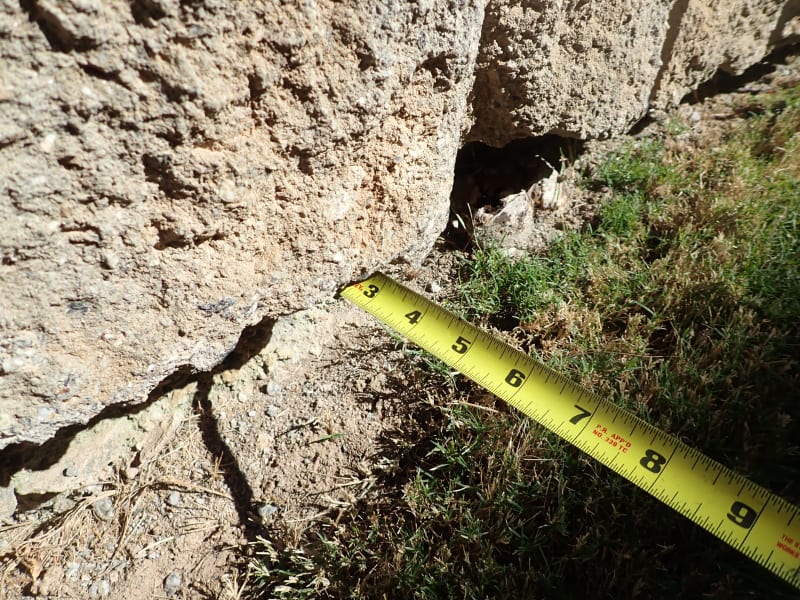
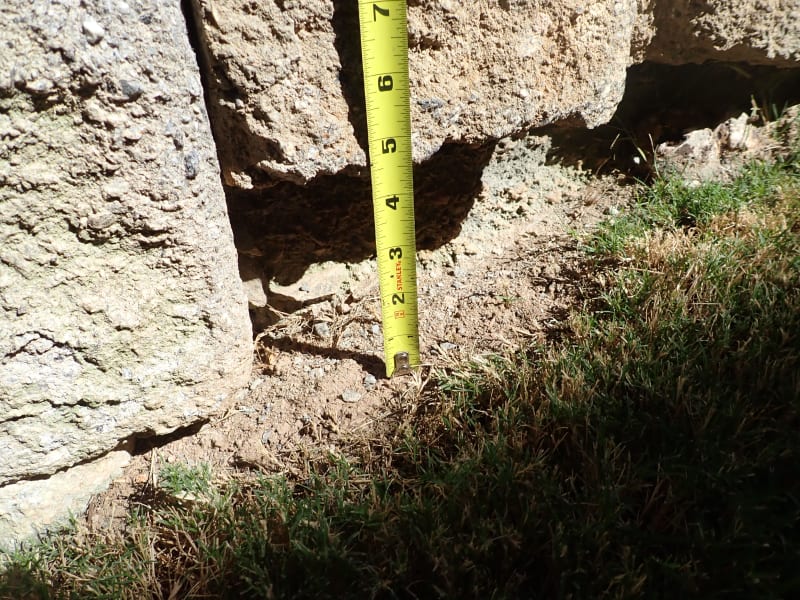
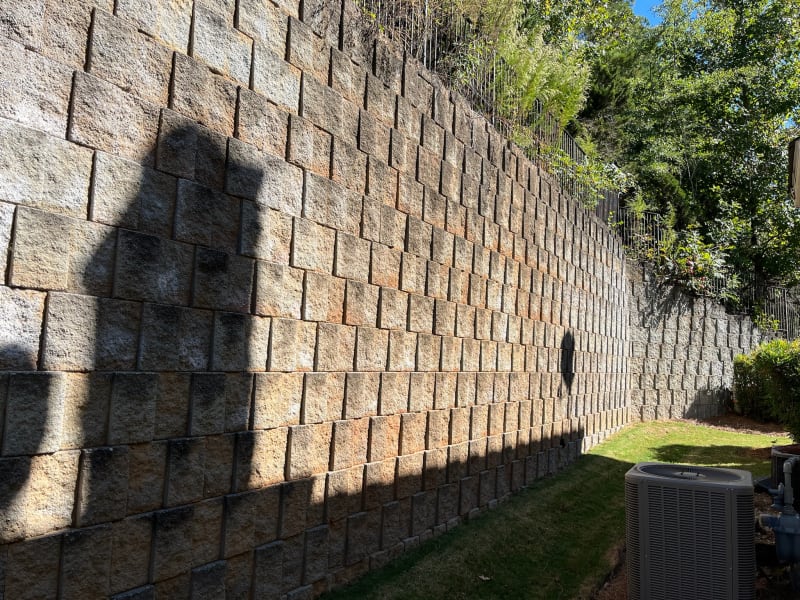
I am looking for options to repair this condition to prevent further undermining and loss of bearing support under the base course of blocks at these two locations. Any suggestions on how to underpin the wall in these locations?
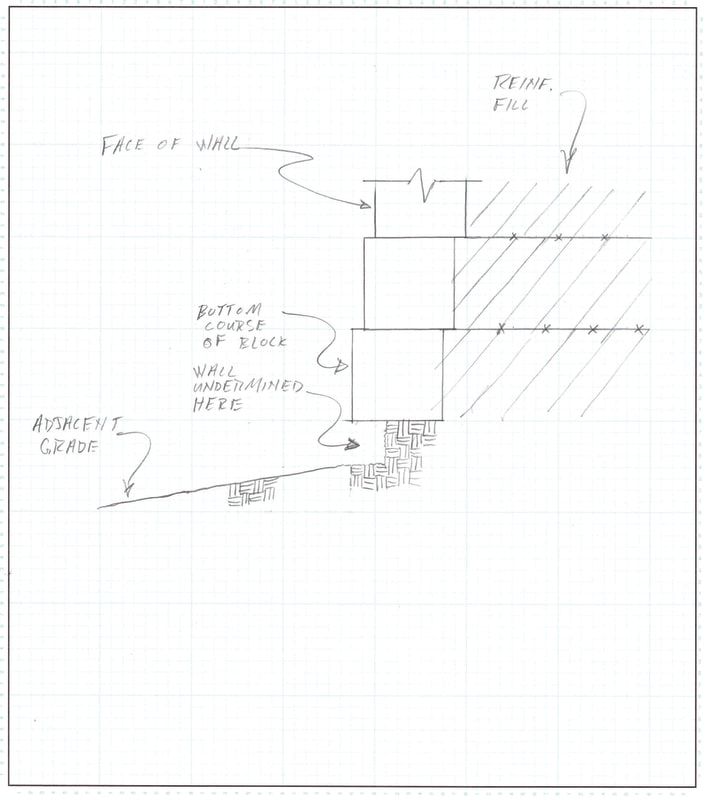
and approximately 16 feet high (maximum). The adjacent grade at the toe of the wall slopes up gradually from one end of the wall to the other, so the base course of blocks steps up periodically as the grade slopes up. Due to inadequate embedment at the base of the wall and the stepped base course, there are two locations along the wall where the base course of blocks is above the adjacent grade (i.e., zero or negative embedment). At each of these locations the face blocks have been partially undermined due to loss of aggregate base from underneath the base course of blocks where there is negative embedment (see photos and sketch). The wall has been in service for approximately 20 years and appears to be in serviceable condition other than these two locations where the face blocks are undermined. Each of these locations is approximately 6 feet long.




I am looking for options to repair this condition to prevent further undermining and loss of bearing support under the base course of blocks at these two locations. Any suggestions on how to underpin the wall in these locations?


